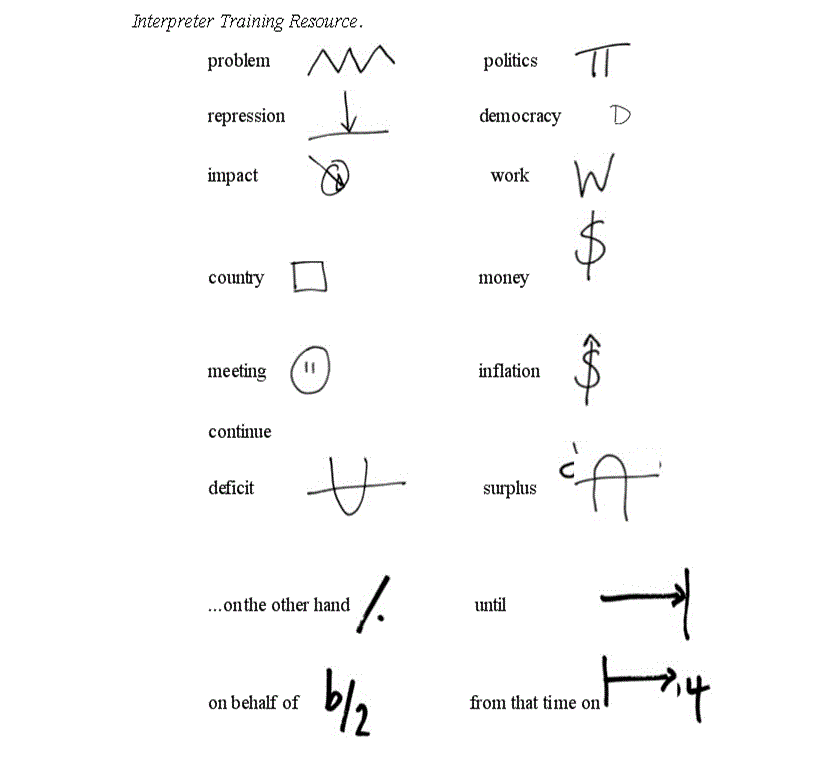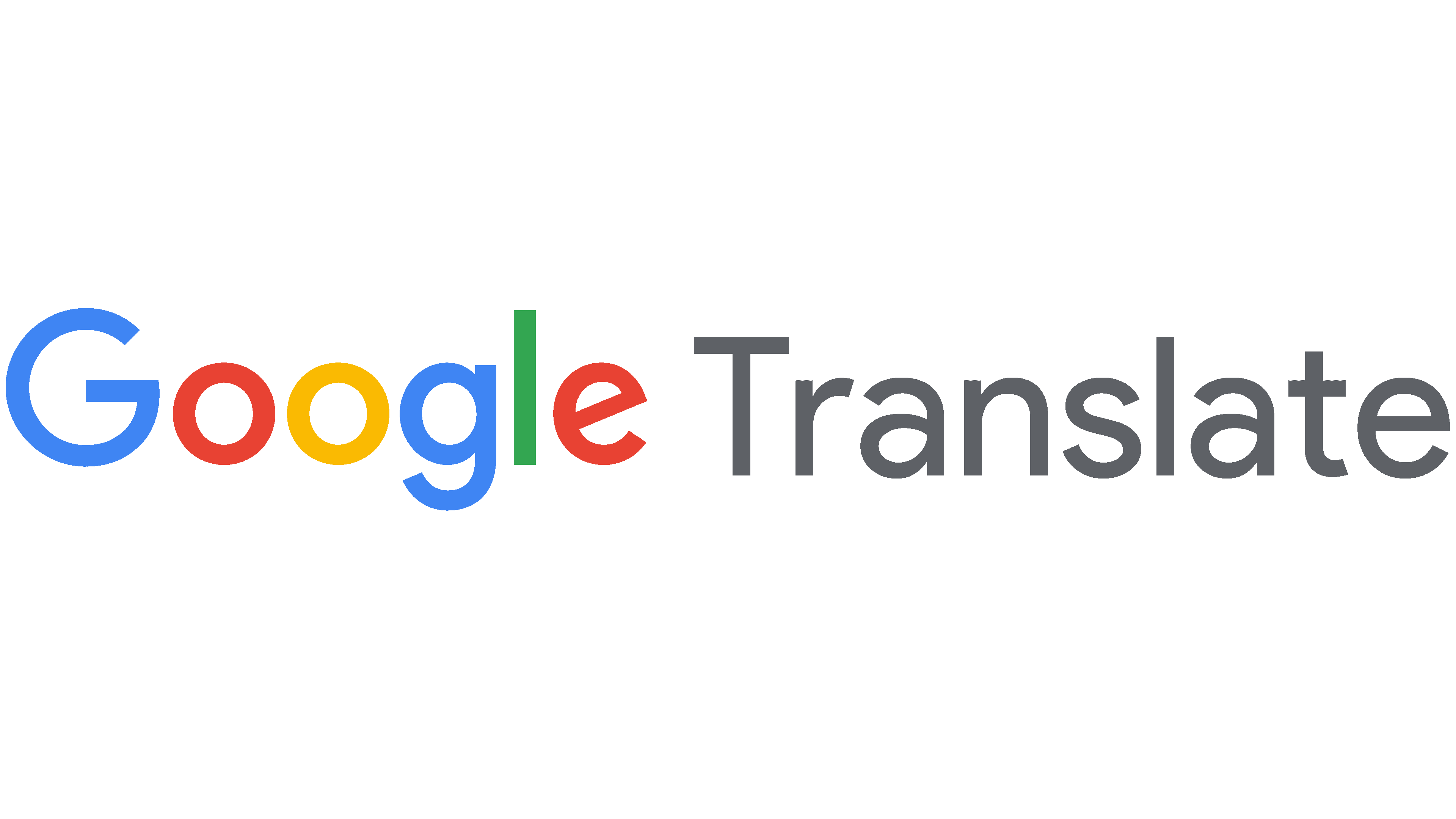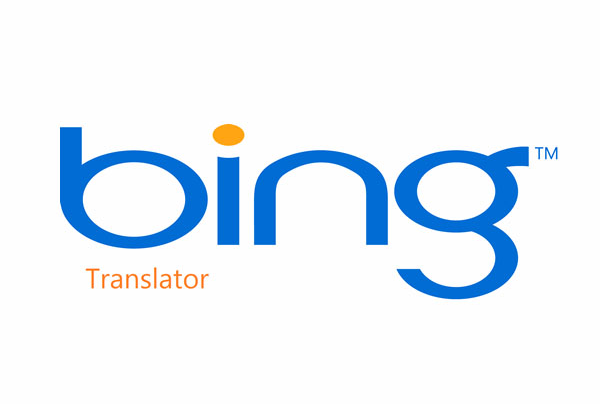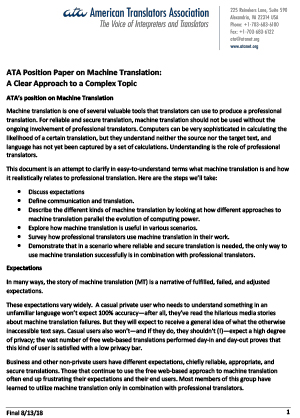| Cultural transcreation |
|||||
| Complimentary services | |||||
|
Interpreting is a linguistic activity that involves converting spoken or signed expressions from a source language into a target language in real time. Unlike translation, which allows for multiple revisions, interpreting requires the interpreter to deliver an immediate and final rendition based on a one-time exposure to the source material. The two primary modes of interpreting are simultaneous and consecutive, but there are many more modes which use depends on the situation, context and topic of what needs to be interpreted. Interpreting requires exceptional linguistic skills, acute cultural awareness, and a deep understanding of the subject matter to convey meaning accurately and facilitate effective communication across different languages and cultures.
|
|||||
|
The most common forms of interpreting BMF de Jure executes are: Simultaneous interpreting (SI) is when an interpreter translates the message from the source language to the target language in real-time. Simultaneous interpretation has high demand mainly because it saves time and engages diverse audiences. It is used during large-scale conferences and business meetings as well by governmental institutions and organisations like UN and European Parliment. |
|
||||
|
Consecutive interpreting (CI) is a mode of interpreting in which the speaker makes a speech (or says a few sentences) whilst the interpreter takes structured notes. The interpreter then reproduces what the speaker has said for the audience. The original speaker has to pause every so often to allow the interpreter to communicate what has been said. This mode is frequently used in smaller meetings, court proceedings, or medical consultations, where accuracy and clarity are prioritised over speed. |
|||||
 |
Whispering interpretation (Fr. chuchotage) A whispered interpreter interprets the message in his/hers mind and “whispers” it to the client. The interpreter leans over and communicates the message in a client’s preferred language in a quiet voice. Just like simultaneous interpreting mode, whispered interpreting carries the challenge of immediate understanding: the interpreter have to listen, understand, translate and deliver the speech at the same time. It is suitable for smaller meetings. | ||||
| Relay interpretation is your best mode when there are no interpreters available for a particular language pair. If German to Russian interpreters are missing, a German interpreter would interpret the speech into a more commonly spoken language like English. The second interpreter would provide English to Russian interpretation.
Relay interpretation requires precision and synchronisation, and interpreters can do it both simultaneously and consecutively. The downside of relay interpreting is long delays: on average, relay interpretation is longer than any other mode of interpretation. |
 |
||||
 |
Liaison interpretation (or dialog) is the most informal mode of interpretation lacking some accuracy when compared to consecutive interpretation. Word-to-word interpreting is not required here but frequent pauses are necessary so the interpreter doesn't loose the details of the conversation.
The main goal of liaison interpreter is to build connections during small meetings or business negotiations when clients do not speak each other's language. Generally liaison interpretation takes place between two to four clients with the focus on fostering relationships and successful negotiations rather than communicating the essence of each word. |
||||
| Travel/tour interpretation (or escort interpretation) is a type of interpretation that differs from others because it relies on a cultural perspective. Travel interpreter accompanies the client to the previously agreed destination.
Travel interpreter is responsible for interpreting from language A to language B and often handling client’s administrative tasks during the trips. That’s why clients in need of travel interpretation select interpreters based on various aspects. They include personality, languages spoken, cultural knowledge, and understanding of the location to which a client is traveling. |
 |
||||
 |
Over-the-phone interpretation (OPI) is one of the remote interpretation services. Such service providers tend to operate in more than 100 languages. Governmental institutions often use OPI on occasions related to healthcare or public concerns in countries like Jersey and the United States. OPI has some disadvantages: users and interpreters can’t see the speaker, his/hers emotions and other non-verbal cues, which leads to confusion, long pauses, and interruptions on both sides. Body language and facial expressions play a huge role in interpreting. Another issue is usually background noise and the distance of the speakers from the phone itself. Over-the-phone conversations do not take a very long time. They are specialised and usually don’t go into the depths of a matter. However, OPI interpretation is often be the best choice. |
||||
|
Distance video interpretation (over Zoom, Skype, Microsoft Rooms, Google Meet, etc. ) became more popular during pandemic. It has been used by courts, medical professionals, and every time when a face-to-face meeting wasn't possible. It allows to hire interpreters who are not working in that particular area. Like the relay interpretation it can be done simultaniously or consecutively providing that the interpreters and the speakers use adequate equipment. |
 |
||||
| Taking notes for interpreting | |||||
|
Note-taking is a crucial skill for interpreters, especially in consecutive interpreting, where the interpreter listens to a segment of speech and then renders it into another language. The interpreters require to make interpreting notes during the interpreting assignments to help them to remember what has been said, at a quick glance. Effective note-taking helps ensure accuracy and completeness, capturing key points, numbers, dates, and other critical details. They supposed to elicit in the interpreter's mind the intent of an oral communication so that it can be re-expressed in a different language. This is done when the conversations take a long time and are carried out without breaks. Interpreters often develop their own system of shorthand, using symbols and abbreviations to quickly jot down information. The focus is on recording ideas rather than verbatim notes, emphasizing concepts, relationships, and structure. Notes should be clear and organised, allowing the interpreter to recall the speaker's message accurately. Good note-taking also involves active listening and quick mental processing, as interpreters must discern what information is essential. Practicing and refining these techniques is essential for delivering high-quality interpreting services. |
 |
||||
|
What is translating? |
|||||
|
Translation is the process of conveying the meaning of a source-language text into an equivalent target-language text. The degree of translation complexity and adaptation varies depending on the nature and purpose of the original content. Translators aim not only for linguistic accuracy but also for contextual and cultural relevance, ensuring the final text resonates with the target audience while maintaining the intended message. Two main forms of translation include:
The choice of translation method depends on factors such as content complexity, confidentiality requirements, and the desired final output quality. Ultimately, effective translation is about bridging linguistic and cultural gaps to create seamless communication across diverse regions and audiences. |
|||||
|
There are a few terms that are used largely interchangeably in the language services industry despite the fact that they have a different meaning. They are:
The definition of an official translation varies depending on the country’s legal system, as each country has its own requirements for stamping and regulating official translations. In the United Kingdom, certified translations are official translations that are stamped and/or signed by a professional translator or translation company accredited by the relevant professional body, such as the Chartered Institute of Linguists (CIOL), the Institute of Translation and Interpreting (ITI), or the Association of Translation Companies (ATC). Certified translations act as official documents which are deemed acceptable to authorities due to the presence of explicit signals that denote the professional competence of the translator. Therefore, when accompanied by the original document, a translated document acquires the same official and legal authority as the original. The translator or translation company accepts responsibility for its accuracy by adding a translation certificate or affidavit stating that the translation is “true to the original”, which is then signed and/or stamped by the translator or translation company. A sworn translation is an official translation recognised in certain countries and legal systems. A sworn translator is a professional authorised by a government or court to translate and certify the accuracy of official documents, such as birth certificates, marriage certificates, and legal contracts. The translator includes a sworn statement or affidavit with the translation, confirming its accuracy and completeness. This statement is usually signed and stamped, making the translation a legal document with the same value as the original. This system exist in the Republic of Poland. Sworn Translators are obliged to carry a register of carried out translations that is audited by the Court clerks of the Court which took translators oath to provide professional translations. Sworn translations are often required for official purposes, like immigration or legal proceedings, in countries where this type of translation is recognised. However, in the UK, the concept of a sworn translator does not exist, so no UK authority will request a sworn translation. While all sworn translations are certified translations, not all certified translations are sworn translations. The requirements and procedures for each type vary by country, legal system, and the requesting organisation or authority. A recognised translation is one that an organisation, institution, or authority accepts as accurate and valid. The specific requirements for a recognised translation can differ depending on who is requesting it. It may need certification by a professional translator or translation company. For instance, recognised translations may be needed for academic transcripts and diplomas when applying to universities or for legal documents submitted to courts or government agencies. Since there is no government-regulated certification system in the UK, each authority might have its own format for certified documents. It's best to get clear instructions from the organisation requesting the translation about how the documents should be certified and if stamps or seals are needed. In the UK and Jersey, interpreters are required to present their professional credentials and take an oath or affirmation before interpreting in a hearing or trial. BMF de Jure issues certificates of translation along with the translated documents and can certify translations of submitted documents. Additionally, clients may request a Certificate of Translator Competence to verify the translator’s qualifications and expertise. Our comprehensive understanding of international standards ensures that our sworn translations meet the stringent requirements of various legal and governmental authorities. Whether for court proceedings, immigration purposes, or official business transactions, our certified translations maintain the highest level of accuracy and integrity to ensure seamless communication across languages. |
|||||
|
A notarised translation is an official translation certified by a Notary Public or similar legal authority. This may be required by the authority receiving the document. In this process, the translator or a representative from the translation company signs the translation and takes an oath before a Notary Public, confirming its accuracy. The Notary Public then adds their official seal, certifying the authenticity of the signature. Notarised translations are often needed for legal documents like contracts, deeds, and powers of attorney, especially when used in foreign countries or for official purposes. This notarisation makes the document legally binding, allowing it to be submitted to government agencies, courts, and other authorities. It's important to note that the Notary Public or solicitor does not certify the translation itself, but rather the signature of the translator or representative. |
|||||
|
Legalisation is the process of verifying a document's authenticity, often needed for documents like birth certificates, marriage certificates, and diplomas when presenting them to foreign governments, schools, or other authorities. A legalized or apostilled translation is an official translation certified by a legal authority, such as a government office or embassy, to be valid in another country. In the UK, the Foreign, Commonwealth and Development Office (FCDO) handles document legalisation. The FCDO provides a certificate called the Hague Apostille, which is recognised internationally. This certificate confirms the authenticity of the document and the authority of the person who signed it. In Jersey, it is a Customs and Immigration Service who legalises the documents. In Poland the legalisation is done by the sworn translator appointed by the Court. The FCDO can legalise documents and translations originating in the UK. If a document originates outside the UK, the FCDO can only legalise the translation if it was done in the UK. The original foreign document must be legalised in its country of origin. If you want to understand better different type of translations look into this A Comprehensive Guide to Official Translations. |
|||||
|
Linguistic localisation is the process of adapting a product's translation to align with the cultural, linguistic, and regulatory preferences of a specific country or region. This adaptation goes beyond literal translation to ensure that the localized content resonates authentically with the target audience. It may include changes to personal names, such as converting "Smith" to "Kowalski," or geographic names like "Warsaw" to "London," as well as modifications in colloquialisms, idioms, and culturally significant symbols. This process forms the second phase of a broader strategy that encompasses translation and cultural adaptation, commonly referred to as internationalisation and localisation. Internationalisation focuses on designing the product to support multiple languages and regions from the outset, while localisation ensures the final adaptation considers specific regional distinctions, cultural norms, legal requirements, and user expectations. Effective linguistic localization is crucial for creating a seamless user experience that feels native to the end users in each market. It involves comprehensive research and attention to detail in various aspects, including imagery, date formats, currency, measurement units, and even regulatory compliance. By considering these regional differences, businesses can enhance customer satisfaction, strengthen brand loyalty, and optimize their global market reach. Proper linguistic localization is essential for any organization aiming to build meaningful relationships with diverse audiences around the world. |
|||||
|
Cultural transcreation is a multifaceted process that extends beyond mere literal translation. It requires an in-depth analysis of the original text's cultural context and identifies modifications needed to achieve the same communicative impact in the target market as intended for the original audience. This process encompasses adjustments to tone, vocabulary, and dialect, as well as other essential elements tied to the campaign's objectives, such as imagery, color schemes, scenery, prevalent perceptions, and musical interpretation. Transcreation is designed to ensure that the message resonates with the target audience, taking into account linguistic subtleties, regional preferences, and socio-cultural norms. It strives to maintain the authenticity of the original content while making it culturally relevant and effective within the new market. This approach is particularly crucial for marketing campaigns, literary translations, and international business communications where cultural nuances can significantly influence reception and engagement. To gain further insights into transcreation and the importance of cultural context, please download our Guide on the Importance of Cultural Context. It provides comprehensive information on best practices and strategies for delivering culturally attuned messages that effectively bridge global markets. |
|||||
|
Generic Machine Translation services such as Google Translate, or Microsoft Bing Translator can be excellent tools for gaining an approximate idea of what a foreign-language communication says. For the casual user, "getting the gist" of the message may be helpful for ordering at a restaurant abroad or receiving messages from a foreign Airbnb host. Customizable Machine Translation services can be trained to improve accuracy of terminology within a specific field such as medical, legal, finance, etc. and those systems are usually run by specialised translation agencies and freelancers. WHEN TO USE MACHINE TRANSLATION FOR PROFESSIONAL PURPOSE 'GET THE IDEA' APPROACH The output of machine translation can be better, if the original texts were prepped with relatively short sentences or very controlled terminology. However, post-editing by a professional translator will be required, unless errors and non-idiomatic style can be tolerated. This type of translation is not suitable for confidential and complex documents especially when the low degree of accuracy may cause the damage to the business or project. Every translation of this type must be explained to the client so he/she knows what to expect. WORD OF CAUTION Bear in mind that the content translated by free online Machine Translation services may be stored and analysed to improve the results of the software. Also, if you are considering using a Machine Translation service, you must review the terms and conditions to ensure your data remains confidential. An alternative will be to approach a freelance translator who will keep the content of the translation secure. If you consider using Google or Bing translator on your own you may have to take the responsibility for breaking GDPR policies, leaking the information into the Internet or for embarrassment caused by the inadequately translated document. Any of those may create a liabilities directly impacting your career regardless your profession. WHEN NOT TO USE TRANSLATION FOR PROFESSIONAL PURPOSE 'GET THE MESSAGE' APPROACH If the law, a life, or your bottom line is involved, relying on Machine Translation can have disastrous consequences. The choice between MT and human translation depends on the kind of text that needs translation and how important accuracy is to you, your company, and your customers. With the right process in place, functional texts in common language combinations will yield adequate results by using a combination of MT and human post-editing. Saying that a qualified professional needs to carry out the post-editing. As to the creative, specialised and literary texts, they should be translated by a human. Machine Translators will not be able to render style, nuance, or idiomatic expressions. This is especially important in business, advertising, legal and government. Poor translation can be embarrassing or even disastrous for your business—endangering customers and putting your company and peoples life at great risk and lead to expensive lawsuits. To learn more on this topic further, download ATA's Position Paper on Machine Translation: A Clear Approach to a Complex Topic.
|
|
||||
|
|
|||||
|
|
|||||
|
Additional services carried out as part of the translating and interpreting |
|||||
|
Translating and interpreting are rarely carried out in isolation from other skilled tasks and because of that BMF de Jure offers the following, additional services:
|
|||||




